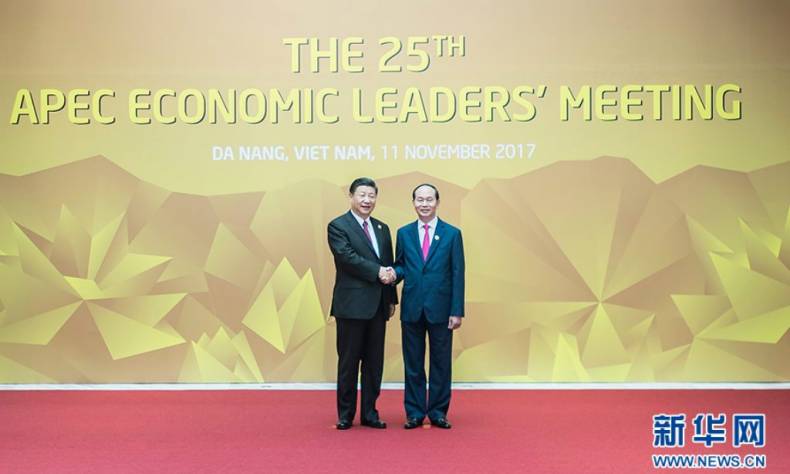
Commentary: A Future Shared by Asia-Pacific Economies Needs All Parties’ Efforts
The 25th Asia-Pacific Economic Cooperation (APEC) Economic Leaders’ Meeting is held here on Friday and Saturday, focusing on the development in the Asia Pacific region.
by Liu Tian, Mao Pengfei
The 25th Asia-Pacific Economic Cooperation (APEC) Economic Leaders’ Meeting is held here on Friday and Saturday, focusing on the development in the Asia Pacific region.
For the gathering economic leaders, coming up with a recipe for regional and world economic growth, creating new dynamism and fostering a shared future are among the APEC economies’ top agenda.
The Asia-Pacific region is now facing some uncertainties in economic development including that multilateral free trade agreements are threatened with being downgraded to bilateral levels and restrictive measures are adopted on free trade and investment, making protectionism the top risk of the region’s growth at a time of the absence of major driving forces in economy.
An increasing trend of trade protectionism would risk jeopardizing the APEC’s fundamental architecture of free trade and its major goal of realizing an open, inclusive and integrated development in the entire region, as well as the group’s main commitment to Bogor Goals aimed at achieving trade and investment liberalization among the 21 APEC members.
However, most of the economies, although having different needs and demands, have increasingly realized that it is unlikely for any single member to be insulated from gloomy waves of a lackluster global economy recovery and the only way out of the depressed situation entails joint efforts from all parties.
For decades, fast economic development in the Asia-Pacific is much attributed to the increasing free and open trade and investment among regional economies, making it possible for the region that accounts for only about 40 percent of world total population to contribute 60 percent of the total global GDP and 50 percent of world trade.
As the most dynamic region in terms of economy, the APEC members could set a leading example of making joint efforts and providing a shared method for various sides with different demands in improving regional economic performance for the rest of the world.
The APEC leaders should prioritize an envisaged Free Trade Area of the Asia-Pacific (FTAAP) with freer flow of investment and trade and higher connectivity among the APEC members so as to revitalize regional economic recovery strongly and smoothly.
To realize the FTAAP, the APEC economies need to continuously work on a freer and open market to all other members and other countries and regions in the world as trade and investment serve as a major driving force for regional economic growth. It also requires the APEC leaders’ wisdom and courage to balance domestic pressure and their regional and global responsibilities.
Only with intertwined interests in the Asia-Pacific region, the APEC members could reach consensus that their future are shared by each other and they shoulder the responsibility to build a better future not only for themselves but for other members.
Source:Xinhua
 Facebook
Facebook
 Twitter
Twitter
 Linkedin
Linkedin
 Google +
Google +










